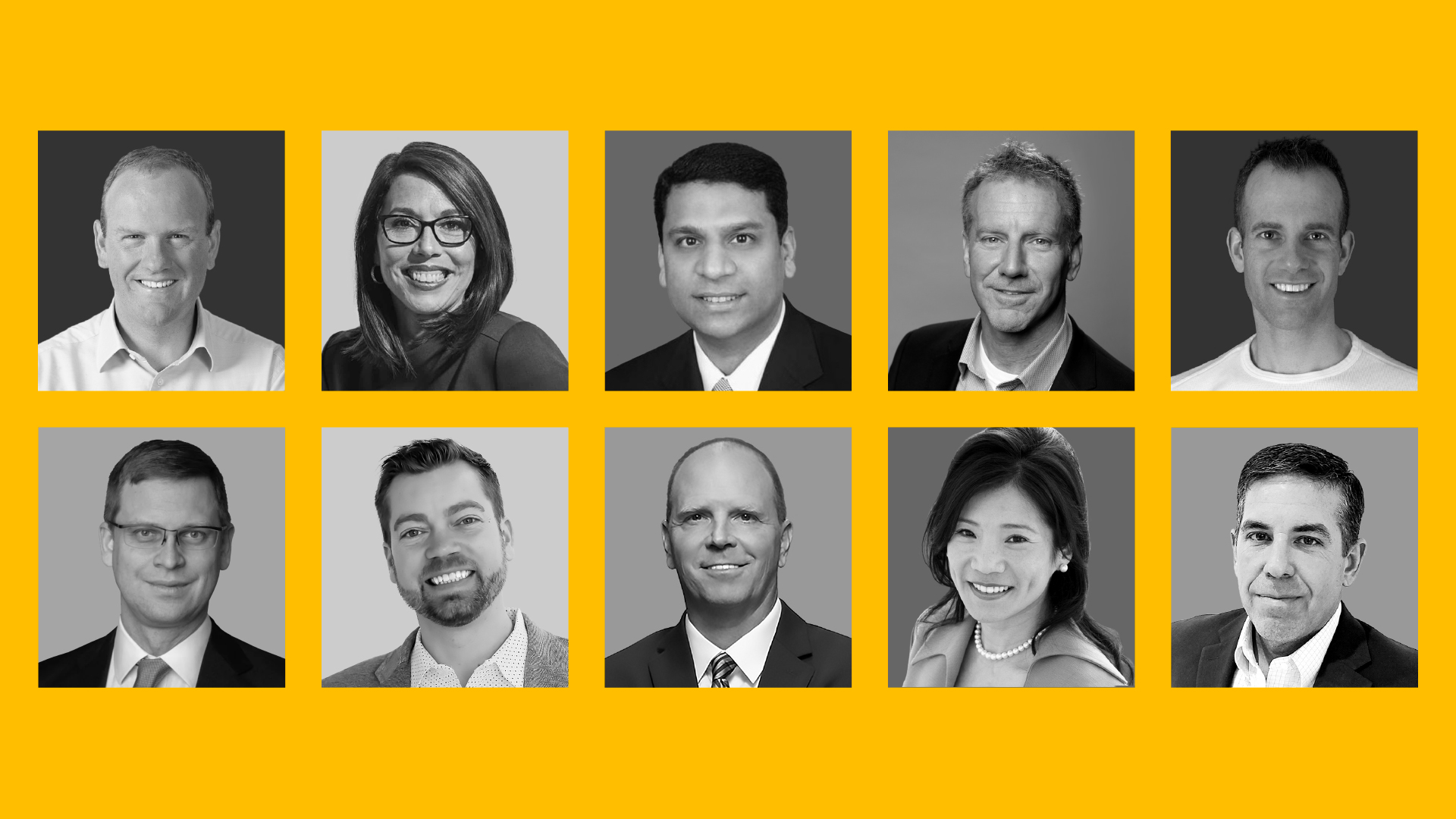With season three of Guidewire’s InsurTalk podcast interview series now underway, audiences continue to embrace the unique space we’ve carved out on their playlists:
A hit podcast series about breakthrough innovation in the insurance industry
Indeed, this past year gave us a lot to celebrate—including:
- 13 new episodes (for a total of 30) featuring industry leaders who’ve leveraged the strategic application of modern technology to achieve competitive advantage
- Significant reach across Apple Podcasts, Amazon, Spotify, Stitcher, Tune-In, Overcast, Google Podcasts, and other top platforms
- A growing audience with nearly 20,000 listens—and climbing
It’s easy to see why. The expert insights shared over this past year are as amazing as they are innumerable. As we take one last look back, here’s just a tiny sampling of notable quotables from Season Two:
“Insurtech could be a competitive threat or…help us beat the incumbent down the street”
“You saw some strange activity…in the early days of insurtech, where people said, ‘Well, we all need to go out to Silicon Valley and hang out at Google and Facebook’s offices, and then come back, get some beanbag chairs, and we’ll all be inspired. Suddenly we’re going to act like a startup.’ Fortunately, we’re not hearing any of that anymore…. What we’re starting to see now is carriers and others in the insurance business saying insurtech could be a competitive threat to us. Or they could be a partner and help us beat the incumbent down the street or in the next state over…. And that’s what’s going to lead to substantial amounts of innovation coming not just from insurtechs, but also from established carriers.”
Adrian Jones, Partner, HSCM Ventures
“You can’t efficiency your way to success”
“Most of the innovation that we’ve been focused on in the industry has been around efficiency and cost cutting. And the truth is that while those are good things—I’m an ex-management consultant, I love lean, don’t get me wrong—you can’t efficiency your way to success in the long term. You can only take out so much cost. The real benefit [of innovation] is in your product and how you deliver it.”
Bryan Falchuk, Author of ‘The Future of Insurance’
“Cloud is a done deal. It is core to what the future of insurance will be.”
“The purest truth is that the future will be data-driven and agile…. Products will evolve faster and faster; pricing [will be] more individualized. Sensor data will become ubiquitous to lower risk. Embedded insurance is inevitable. And I personally don’t see a path toward achieving that without cloud at the center…. It’s about converting not just your current strategic applications into the cloud—you [also] have to convert your legacy applications into cloud-enabled…to allow for far better and complete use of that data. So to me, cloud is a done deal. It is core to what the future of insurance will be.”
Shane Cassidy, EVP Global Insurance, Capgemini
“Combine the strengths of digital with the strengths of humans.”
“What we need to do is combine the strengths of digital with the strengths of humans…. The more digital the world becomes, the more important and the more valuable human interfaces will be…. If you do the digital part right, and you focus on operational excellence…you will neutralize the negative emotions of people. They won’t be frustrated with you. And by doing so, you create time and space for joy—the human part—to create [an] emotional bond.”
Steven Van Belleghem, Global Thought Leader on Customer Experience
“Our ultimate goal is to be a purpose-driven, digitally-led national insurer”
“The whole idea behind [our] Next Horizon strategy is to look out 10 years on the horizon…. Our ultimate goal is to be a purpose-driven, digitally-led national insurer over the next decade…and there are three key components of the transformation. The first one is completely rebuilding our operating models, really bringing in the best-in-class operating model design from around the world. The second pillar is completely replacing all of our technology over a very accelerated two- to three-year period with the industry-leading cloud-based Guidewire platform. And the third one…is a significant investment in the talent and elevation of our business…. So really taking our business from being a mid-size regional generalist insurance company and building a scalable business model that will allow us to achieve that vision of becoming a national insurer in the years to come.”
Andy Taylor, CEO, Gore Mutual Insurance Company
“Culture has the highest impact on a company’s ability to complete a transformation.”
“The success factors are the same everywhere—the ability to really drive and mobilize talented individuals; the ability to navigate through high turbulence; to stay positive despite a demanding workload; the ability to manage short-term needs while looking ahead to ensure the company’s sustainability and long-term performance. And the reason the results are not the same everywhere is due to the culture of each organization and the capacity to execute. The culture has the highest impact on a company’s ability to complete a transformation. If the culture is not in line with our business needs, then regardless of all the investments resources, their result will never match the ambition. In the end, human beings are at the heart of these achievements.”
Catherine Desgagnés-Belzil, EVP, Business Performance, Beneva
“Cultivate an environment to closely resemble the talent mix of the world.”
“I don’t want to oversimplify this, but I think the world is a diverse place. It is logical for us to aspire to cultivate an environment to closely resemble the talent mix of the world. I strongly believe that different genders, backgrounds based on culture, preferences and ways of living bring different strengths to the team. And different perspectives can only make our collective viewpoint that much more encompassing.”
Priscilla Hung, President and COO, Guidewire
“In the age of immediate satisfaction, we need to manage stakeholder expectations”
“In order to move people to a future state, it’s important to understand the current state, how people work, and how they consume information…. Change management comes in to help fill the gap between current and future states…through stakeholder engagement and enabling the behaviors that drive adoption…. Keep in mind that core transformations are longer-duration projects. In the age of immediate satisfaction, we need to manage stakeholder expectations, pace communications accordingly, and manage lulls in the program. Also, don’t forget to highlight and share [even] the smallest wins.”
PwC’s Imran Illyas, Financial Services Partner and Insurance Operations & Technology Co-Leader
“In Things have never moved as fast as they are right now. They’ll also never be this slow again.”
“…I see a future where insurers are critical elements to providing stability, peace of mind, and protection—but really taking it to the next level. Rather than being almost exclusively indemnification, really trying to be more proactive—leveraging the Internet of Things, predictive analytics, machine learning, etc.—to be a more embedded, integrated, and proactive manager of risk for our customers.… [That’s why] we’re really eager to simplify and automate day-to-day workflows…. We’ve invested a lot in new data stacks…middleware, [and] new APIs. We’re cleaning up our data and augmenting it with new, novel data sources to improve our predictive analytics. We’re introducing new product lines as well, to meet the shifting expectations of our agents and our customers. Not just to meet those expectations, [because] ultimately, the goal is to gain an edge.”
Brent Hammer, Enterprise Innovation Officer, Grange Insurance
“A lot of things are going to change in the next 10 years—and insurance companies will have to change accordingly.”
“Insurance is an industry that’s worked really well over the past 100 years. A lot of things are going to change over the next 10 years—and insurance companies will have to change accordingly. If you think about the successful insurers of the future, they’re going to have to find a way to leverage a diverse set of ideas, which allow for fast- and cost-effective experimentation…in a launch-and-learn type of model. And those that are able to do that will have found themselves a competitive advantage. For those that aren’t able to do that, they have a competitive threat ahead of them.”
Bob Reveal, Partner, Ernst & Young
—Note: The excerpts featured in this post may have been lightly edited for clarity and context.
Hearing More Is As Easy As 1, 2, And 3
To hear more from these and so many other extraordinary interviews, be sure to subscribe to InsurTalk on Amazon, Stitcher, iTunes, or wherever you get your podcasts. Because if you want to learn more about the trends, technologies, and trailblazers reshaping the industry, this is the show for you >>



